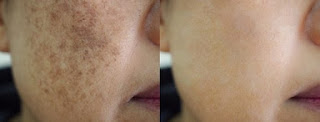Key Guide To Effective Hyperpigmentation Treatment
Hyperpigmentation is a disease that affects skin color.
Hyperpigmentation is a common and usually harmless skin condition in which some
skin patches are darker than the surrounding normal skin. Dark spots are
pronounced, so it is necessary to choose hyperpigmentation treatment. To
understand hyperpigmentation, let us first understand melanin. Do you have
uneven skin tone or dark spots? Don't worry; you are not alone.
Hyperpigmentation or hyperpigmentation affects people of all races and ages. It
is produced by specialized cells in the skin called melanocytes in the upper
layer of the skin. Frequent sun exposure of the skin can stimulate melanocytes,
resulting in overproduction and uneven distribution of melanin in the skin.
This can cause uneven skin tone, freckles, dark spots, and age spots. In
addition to excessive sun exposure, aging, hormonal changes, and free radicals
are other common causes of hyperpigmentation.
Common Hyperpigmentation Causes
Before delving into each type of hyperpigmentation treatment, you need to understand the different forms of hyperpigmentation.
- Post-inflammatory hyperpigmentation (PIH) is caused by skin damage, acne or chemical peels, microdermabrasion, and laser treatments that increase melanin production. The color of the spots can be pink, red, brown, or black.
Sunspots (age spots or liver spots) and chloasma appear on the parts of the skin exposed to the sun. When the skin is exposed to harmful UVA and UVB rays, it causes the melanocytes to produce more melanin as a defense mechanism. High levels of melanin can leave discolored spots on the skin.
Melasma also occurs due to hormonal changes in pregnant women (also called pregnancy masks). Age spots are usually the result of photoaging caused by sun damage, accelerating the skin's aging process.
What Shows The Underlying Problem That Can be Caused Due To Hyperpigmentation?
Although too much melanin does not necessarily indicate a serious
underlying health problem, it may cause difficulties from a cosmetic point of
view. For example, pregnant women are at risk of getting the so-called
"pregnancy mask," which refers to the appearance of darker skin
patches around the cheeks, forehead, and mouth that make it look like a mask. This
type of pigmentation does not necessarily disappear with time; if the facial
skin is not protected from the sun's harmful rays, the plates can darken. If
this discoloration is causing you problems and camouflage is not an acceptable
solution, you should consider hyperpigmentation treatment to reduce the appearance
of these skin areas.
Effective Treatment For Hyperpigmentation




Comments
Post a Comment